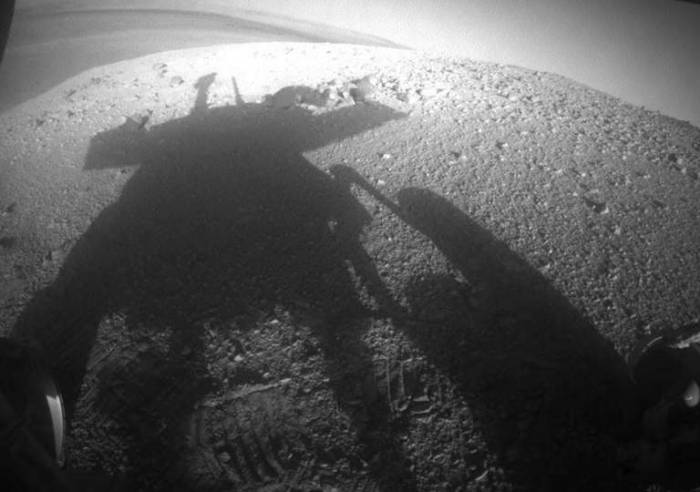This “planet-encircling” event would cover an area the size of North America and Russia combined if it were taking place on Earth.
The storm has already prompted fears Nasa’s Opportunity roverhas died on the surface of the Red Planet after it ceased all communications with engineers on Earth in early June.
Launched in 2003 as part of the space agency’s Mars exploration programme, the robot’s solar panels have been blotted out by the encroaching dust storm.
Nasa has reassured observers that its other rover, Curiosity, is safe on the other side of the planet as it has “a nuclear-powered battery that runs day and night”.
Meanwhile dust from the ongoing storm has steadily increased around Opportunity, more than doubling in volume over the weekend.
Nasa scientists said it may be months until there is enough light on the planet's surface to charge the rover’s batteries and get it performing its scientific duties once again.
If the rover is not able to recharge, it may lose contact with Earth completely and be declared lost, bringing an end to its 15-year mission.
While Opportunity lies dormant, Curiosity will provide scientists on Earth with an unprecedented opportunity to study Martian dust storms.
Such storms are common, especially during spring and summer in the planet’s southern hemisphere when the planet is closer to the sun and winds generated by the warming atmosphere whip up dust particles.
However, gigantic storms that cover the entire planet are much rarer, with the last one recorded in 2007.
The Nasa team is keen to establish why the kind of storm currently covering the planet last for months and grow to such enormous sizes, while others remain small and only last a week.
Nasa announces organic matter has been found on Mars
“We don’t have any good idea,” said Dr Scott Guzewich, an atmospheric scientist at Nasa’s Goddard Space Flight Centre, who is leading Curiosity's dust storm investigation.
Curiosity will work with a fleet of spacecraft in orbit over Mars to collect information about the gigantic dust storm.
Understanding such events will be essential for future Mars exploration, as astronauts on the surface of the planet would want to avoid being exposed to such devastating weather events – where winds can reach speeds of up to 70mph.
While similar dust storms are known to strike our planet, particularly in regions like North Africa, the Middle East and the southwest US, conditions on Earth prevent them from spreading globally.
A combination of a thicker atmosphere and stronger gravity force dust to settle, and vegetation cover helps to hold sand and earth in place.
More about: Mars
















































